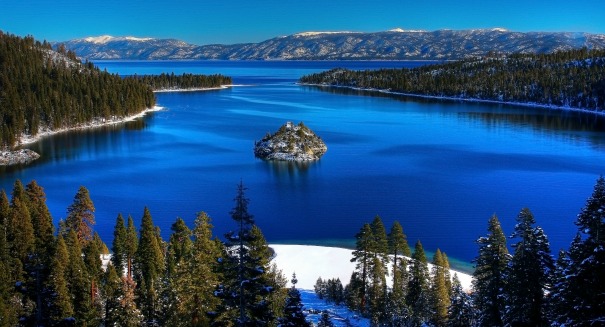-
Tips for becoming a good boxer - November 6, 2020
-
7 expert tips for making your hens night a memorable one - November 6, 2020
-
5 reasons to host your Christmas party on a cruise boat - November 6, 2020
-
What to do when you’re charged with a crime - November 6, 2020
-
Should you get one or multiple dogs? Here’s all you need to know - November 3, 2020
-
A Guide: How to Build Your Very Own Magic Mirror - February 14, 2019
-
Our Top Inspirational Baseball Stars - November 24, 2018
-
Five Tech Tools That Will Help You Turn Your Blog into a Business - November 24, 2018
-
How to Indulge on Vacation without Expanding Your Waist - November 9, 2018
-
5 Strategies for Businesses to Appeal to Today’s Increasingly Mobile-Crazed Customers - November 9, 2018
Temperatures of Lakes Rising Faster Worldwide, as Compared to Oceans and Air
For certain freshwater supplies, like the African Great Lakes, it could be especially harmful as they’re an important source of food for the population.
Advertisement
The study found lakes worldwide warmed an average of 0.61 degrees Fahrenheit per decade between 1985 and 2009.
The 225 lakes studied in the research, while only a fraction of the world’s total number of lakes, account for more than half of the world’s freshwater supply.
Some of the world’s most popular lakes exhibited higher temperature increases, exceeding the average rise of 0.61 degrees Fahrenheit.
Lead author of this study, Ms. Sharma added further that this phenomenon can have profound effects on habitats for fish and other animals as well as on drinking water.
The warming of the lake water points to two definite outcomes: the multiplication of algal blooms and the increase of methane emissions. Those blooms rob lakes of oxygen and some can be toxic to fish, animals and even humans.
“Society depends on surface water for the vast majority of human uses”, said co-author Stephanie Hampton, director of Washington State University’s Center for Environmental Research, Education and Outreach in Pullman.
People use water not only for drinking, but for manufacturing, for cultivating vegetables, for the production of energy.
Water temperature also influences many of its properties that are critical to our health and viability of our ecosystems.
According to lead author of the study, Catherine O’Reilly of Illinois State University, these results are suggesting that these lake changes are inevitable and are already happening now.
Simon Hook, science division manager at NASA’s Jet Propulsion Laboratory in Pasadena, Calif., said satellite measurements measure only surface temperature, whereas hand measurements can detect temperature changes throughout a lake.
Professor Hamilton is part of a group of more than 60 scientists across six continents who took part in a lake warming trends research project that was recently published in the Geophysical Research Letters journal. For example, in northern climates, lakes are losing ice cover and again in many areas, world is having less cloud protection.
This image of Lake Tahoe, from the ASTER instrument on Terra, shows the lake’s temperature variations (cold is blue, warm is red). The Burrishoole research station is an internationally important index site for diadromous fish monitoring, and water temperature is a crucial variable controlling growth, migration and survival of salmon, trout and eel in the catchment.
While satellite measurements go back 30 years, some lake measurements go back more than a century. “But these lakes provide a sort of “climate antenna” that allows us to look at these global trends”.
There’s more bad news when it comes to climate change – and this time it involves the world’s lakes. Their findings were announced Wednesday at the American Geophysical Union in Washington. Hampton said “We want to be careful that we don’t dismiss some of these lower rates of change, In warmer lakes, those temperature changes can be really important”. The temperatures of the lakes have been monitored for a period of 25 years and figures have revealed scientists that temperatures are alarmingly higher now than they used to be in the past.
Many lake temperatures are rising faster than the average air temperatures. Tropical lakes might not see such a dramatic increase, but it’s there nonetheless, and its affecting the ecosystem and the local population.
Advertisement
“There is an urgent need to incorporate climate impacts into vulnerability assessments and adaptation efforts for lakes, not just in New Zealand, but around the world”.




























